Experience Authentic History Hakata Shrines and Temples Course
Hakata Old Town ("Kyushigai") is a district within walking distance of Hakata Station that has kept many interesting streetscapes. The area to the east of Taihaku Dori has shrines and temples in abundance, with plenty of sights including one of Japan's biggest Buddha statues. This course is recommended for those who enjoy walking in places with traditional architecture and character.
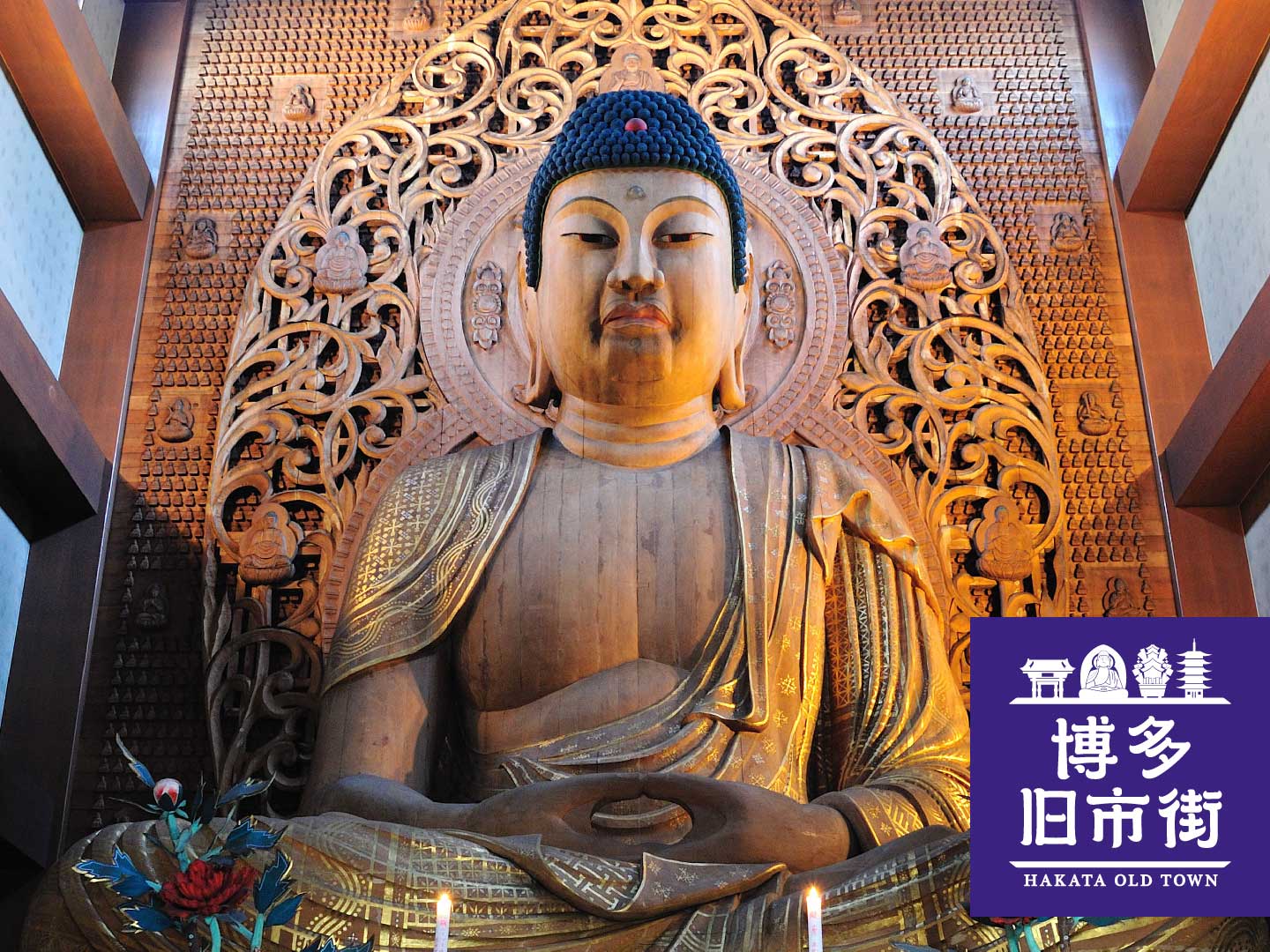
Dekimachi Park
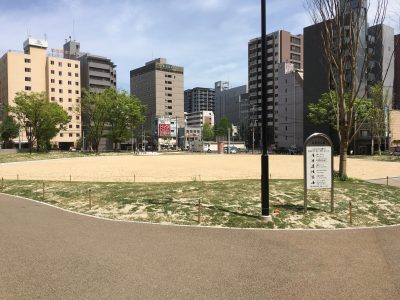
This park was created in 1965. This was the location of the former Hakata Station and there is a monument marking this as the "birthplace of the Kyushu Railway". The park was revamped in December 2017, adding a new gate in its Hakata part. The park has space for six tourist coach stops.
- Address
- 1-10 Hakata Ekimae, Hakata-ku, Fukuoka City
- Details
- YokaNavi Spot Information
Waka Hachimangu Shrine
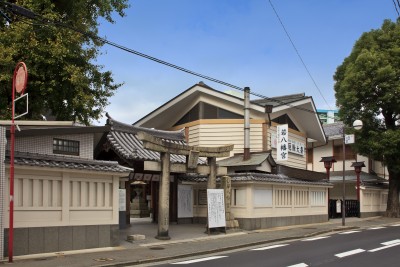
This temple is dedicated to the Gods Emperor Nintoku, Onamuchi no Mikoto, and Sukunahikona no Mikoto. Locally, it is often called Yakuhachiman or Yakuyoke Hachiman (meaning, “the Temple where you can ward off evil”.) Many people in the surrounding areas, even outside of Hakata, have faith in the deities of Waka Hachimangu Temple. The temple is often very crowded late into the night on the eve of the new year in both the western and Chinese calendars as people gather to pray for the dispelling of the evil.
For those subscribing to the Japanese belief that there are certain “yakudoshi” or “bad luck years” in everyone’s lives, it is said that if you pray at this temple the year before your yakudoshi, the year of your yakudoshi, and the year after, you will be free of bad luck the following year.
- Address
- 1-29-47, Hakata-eki-mae, Hakata-ku, Fukuoka
- Details
- YokaNavi Spot Information
Ogususama (the tomb of Shakokumei)
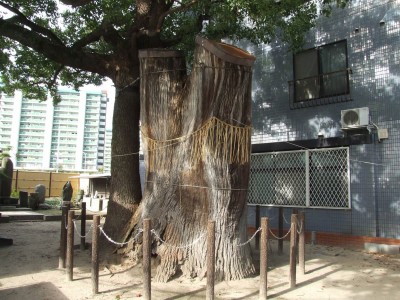
Shakokumei was a naturalized citizen of Japan, originally from Song, who was active in Japan-Song trade. He lived near Kushida Jinja Shrine. He owned Oronoshima Island, and was sometimes referred to as a boatman. It is thought that he was a boatman and capitalist trader. He built Jotenji Temple in 1242, welcoming back Shoichi Kokushi (then known as Enji Benen) from Song to open the temple. A grave and memorial to Shakokumei is located just in front of a bridge over the Mikasa-gawa River, below the branch of a large Camphor.
- Address
- 1-25, Hakata-eki-mae, Hakata-ku, Fukuoka
- Details
- YokaNavi Spot Information
Jotenji Temple
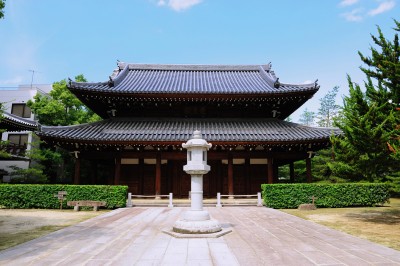
Jotenji Temple was built in the third year of the Ninji era, or 1242. The temple features an uncommon layout in which the grounds are split into eastern and western sections due to the addition of a city street running down the middle during a previous city rezoning project.
Enni Ben’en, who established Jotenji Temple, is said to have brought back the skills to make udon and soba noodles and manju cakes when he returned from Song dynasty China, and thus the area is known as the birthplace of those foods in Japan.
The temple is also the originator of the Hakata Gion Yamakasa festival, held in July every year, during which a sacred path (kiyomichi) is established in front of the temple. Crowds gather there to watch the Yamakasa float being carried around the area as part of the dedication ritual.
- Address
- 1-29-9, Hakata-ekimae, Hakata-ku, Fukuoka
- Details
- YokaNavi Spot Information
Tochoji Temple
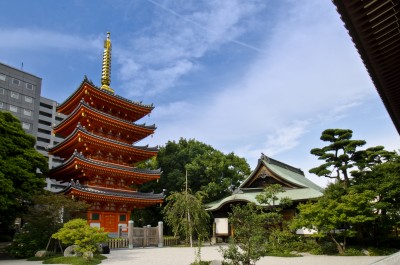
The Fukuoka Great Buddha enshrined at Tochoji Temple is Japan’s largest wooden statue of a seated Buddha at 10.8 meters in height. The statue’s nimbus features two rows of 7 and 13 Buddha images, with a further 5,000 small Buddha images on the wall to the back, creating a very impressive presence. There is also an opening in the base of the statue representing the path from hell to heaven. The pathway inside, decorated in “hell picture scrolls”, leads into darkness. If one uses the handrails to proceed further, they will find an image of heaven at the end bathed in a subtle light. It is said that touching the Buddha ring mid route will enable one to enter heaven.
The temple also boasts other attractions that evoke a sense of both distant and recent history, such as the unique revolving hexagonal hall and the five story pagoda completed in 2011 after 37 years of construction.
- Address
- 2-4, Gokusho-machi, Hakata-ku, Fukuoka
- Details
- YokaNavi Spot Information
Ryuguji Temple
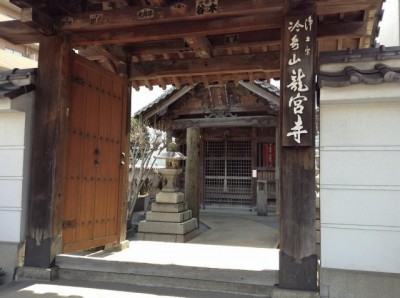
Ryuguji Temple was established during the Kamakura period, when it was located on the shore near Sode-no-Minato port, where legend says a caught mermaid was buried. In fact, perhaps going beyond legend, it is said that the bones of the mermaid are still preserved in the main hall, along with a scroll describing the mermaid’s life. There is also the Kannondo which is one of the seven such temples in Hakata and another destination for pilgrimages.
- Address
- 4-21, Reisen-cho, Hakata-ku, Fukuoka
- Details
- YokaNavi Spot Information
Myorakuji
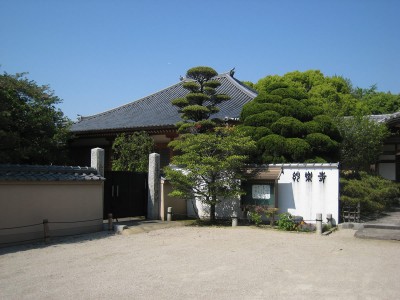
This is the temple of the Rinzai school Daitokuji Sect of Buddhism, built by Getsudo Soki in 1316. Originally, this temple was located along the sea, and was called Okinohama.
The temple was lost in a fire during the Tensho Period (1573-1591). It was moved to its present location after Kuroda Nagamasa, the first lord of the old Fukuoka Domain, started reigning in the area. The temple graveyard contains the tombs of Kuroda Nagamasa, as well as the tomb of Kamiya Sotan, the renowned merchant of Hakata in the Edo Period, and the tombs of the vassals who served the Kuroda Family.
Myorakuji is also well known as the first place to have produced Uiro, a popular local Japanese sweet.
Points of interest for photographers: The demon-shaped roof tiles, the monument declaring the location the birthplace of Uiro, and the nearby Hakata-bei walls (a type of mud wall unique to Hakata).
- Address
- 13-6, Gokusho-machi, Hakata-ku, Fukuoka
- Details
- YokaNavi Spot Information
Engaku-ji Temple
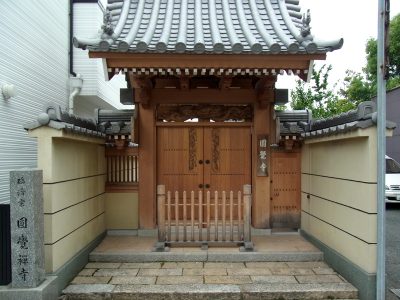
Engaku-ji Temple was built in 1246 at Yaguramon (present-day Gionmachi) by Hojo Tokiyori, fifth regent of the Kamakura shogunate to mark the arrival of Buddhist monk Lanxi Daolong (known posthumously as Dajue Zen Master) from Song China. However, all of the temple buildings were burnt down during the war-torn period.
In 1636, its base was moved to the grounds of Shofukuji Temple and was rebuilt, becoming a monastry for the temple.
The wisdom of the Nampo-roku, a book of secret teachings of the tea master Sen no Rikyu, was passed down at Engaku-ji, based on an initial copy made by Tachibana Jitsuzan of the Fukuoka Domain. Engaku-ji is known for its Nampo style of tea and its Zen training hall.
- Address
- 13-11 Gokushomachi, Hakata-ku, Fukuoka City
- Details
- YokaNavi Spot Information
Shofukuji
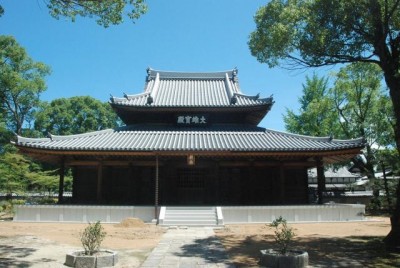
Shofukuji Temple, famous as Japan’s first true Zen temple, was established in 1195, the 6th year of the Kenkyu era, by Myoan Eisai, a Buddhist priest who was the founder of the Rinzai school of Zen Buddhism in Japan. The temple is also known as the birthplace of Japanese green tea, and the temple grounds feature tea plants (Camellia sinensis) from which the tea is made. The temple grounds, designated a national historical site, are a well preserved example of the “garan” layout of Zen temples, with the sanmon gate, Buddhist sanctum, and main hall arrayed in a straight line. The grounds are also filled with natural greenery, providing a soothing sense of being in a forest.
Points of interest for photographers: The nearby Hakata-bei walls (a type of mud wall unique to Hakata.)
- Address
- 6-1 Gokushomachi, Hakata-ku, Fukuoka City
- Details
- YokaNavi Spot Information
Zendoji Temple
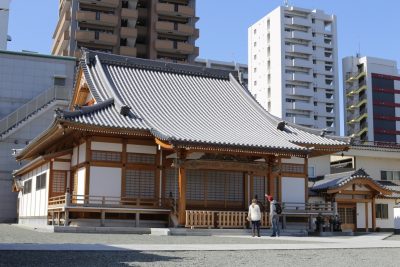
According to legend, Zendoji was built in 1212 by Chinzei Shoko Shonin, the second patriarch of the Pure Land Buddhism Chinzei branch with the statue of influential Pure Land writer Shandao at its heart. However, according to the Chikuzen no Kuni Shokufudoki book, it was built after the reconstruction of Zendoji in the province of Chikugo, in 1477. It became an imperial temple of worship under Emperor Go-Tsuchimikado (1465-1500). The statues of Shandao and Chinzei Shonin, the large bell and the Moko-ikari stone are designated cultural treasures of Fukuoka Prefecture.
- Address
- 6-24 Nakagofukumachi, Hakata-ku, Fukuoka
- Details
- YokaNavi Spot Information
Myotenji Temple
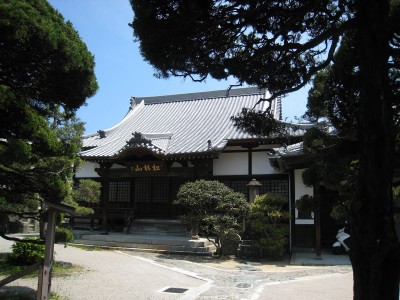
Built in Yanagawa in 1381 by Honjoin Nichien Shonin. Samurai Tachibana Muneshige retainer Komono Masutoki had it rebuilt in its current location as the Tachibana family temple. On April 25, 1603, Nicchu, a monk from the Myokaku-ji Temple in Kyoto, was engaged in a religious argument with Japanese Christian preacher Furusawa and others. The result of the dialogue was victory for Nicchu, who was granted Christian land by the first lord of Fukuoka domain, Kuroda Nagamasa. There he built Shoryuji Temple (4 Tenjin, Chuo-ku).
- Address
- 9-12 Nakagofukumachi, Hakata-ku, Fukuoka City
- Details
- YokaNavi Spot Information